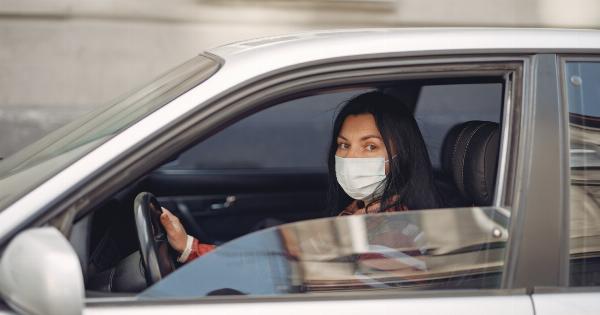Kinetic Nausea is a type of motion sickness that children often experience while traveling in a vehicle. Certain movements in a car, plane, or boat can trigger a feeling of unease, causing nausea, vomiting, or dizziness.
The symptoms of kinetic nausea can last for hours or days, and may affect a child’s ability to enjoy their trip or participate in other activities.
What Causes Kinetic Nausea?
The exact cause of kinetic nausea is not yet fully understood. However, it is believed to be related to the conflicting signals that the brain receives from the inner ear, eyes, and other sensory organs.
When a child is sitting in a vehicle that is moving, their inner ear detects the movement, but their eyes may not register the same motion if they are looking at a fixed object such as a book. This leads to a confusion in the brain, which results in the symptoms of motion sickness.
Factors that Increase the Risk of Kinetic Nausea
There are several factors that may increase the risk of a child experiencing kinetic nausea during travel. These include:.
1. Age
Children between the ages of 2 and 12 are more prone to motion sickness compared to adults. This is because the inner ear, which plays a crucial role in balance and spatial orientation, is still developing during this time.
2. Mode of Transportation
The type of vehicle used for travel can also influence the likelihood of motion sickness. Boats and airplanes tend to produce more motion than cars or trains, making them more likely to cause motion sickness in children.
3. Travel Distance and Duration
The duration of travel and distance covered can also impact the severity of motion sickness symptoms.
Longer journeys and extended rotations during a journey increase the duration of the child’s exposure, which can exacerbate motion sickness symptoms.
4. Sensitivity to Motion
Some children are more sensitive to motion than others. This can be due to underlying medical conditions or individual differences in sensory perception.
Children with inner ear infections or other balance disorders may also be more prone to motion sickness.
Prevention and Treatment of Kinetic Nausea
Parents and caregivers can take several steps to prevent and manage the symptoms of kinetic nausea in children. These include:.
1. Medications
There are several over-the-counter and prescription medications that can be used to treat motion sickness in children. These include antihistamines, such as Dramamine and Benadryl, as well as prescription medications like Scopolamine.
It is important to consult with a doctor before giving any medication to a child.
2. Diet and Hydration
Children should avoid eating large meals before traveling, as this can increase the risk of motion sickness. It may be helpful to provide light, easily digestible snacks during the journey, such as crackers, bread, and apple slices.
Drinking plenty of water can also help to prevent dehydration, which can exacerbate motion sickness symptoms.
3. Positioning in the Vehicle
Children should be seated in a position that minimizes any sudden movements, such as near the front of the car or in a window seat. It may also be helpful to recline the seat slightly or raise the child’s head with a pillow.
Avoiding reading or looking down while traveling can also reduce the incidence of motion sickness.
4. Encouraging Relaxation
Encouraging children to relax and take deep breaths can help to alleviate the symptoms of motion sickness. Listening to soothing music or engaging in quiet activities, such as coloring or reading, can also help to distract from the motion.
Conclusion
Kinetic nausea is a common condition that affects many children during travel. While the exact causes are not yet fully understood, several factors can increase the likelihood of motion sickness in children.
Parents and caregivers can take steps to prevent and manage these symptoms, including medication, hydration, and careful positioning in the vehicle. By working together, we can help to ensure that children can enjoy their travels without the discomfort of motion sickness.




























